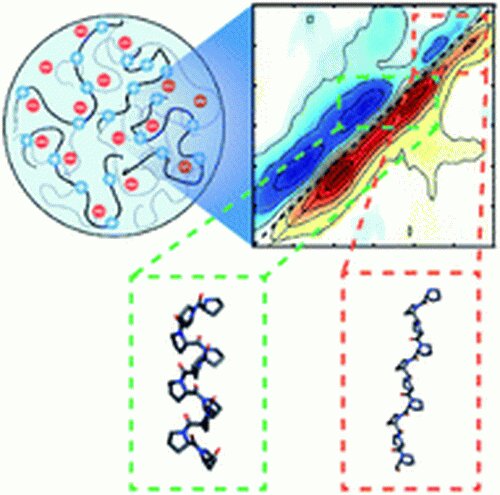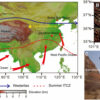Scientists have discovered the first evidence of protein folding driven by liquid-liquid phase separation, a phenomenon in which fluids form into microscopic droplets and separate inside cells—like drops of oil in water.
In a study published in the journal Chemical Science, researchers at the University of Notre Dame found that elevated concentrations of proteins within the droplets triggered a folding event, increasing the potential for protein aggregation—or misfolding—which has been linked to neurological diseases including Alzheimer’s disease and amyotrophic lateral sclerosis (ALS).
“These particular proteins are intrinsically disordered—they have no well-defined structure—but when forced together by these droplets, we see evidence of folding,” said Arnaldo Serrano, assistant professor in the Department of Chemistry and Biochemistry at Notre Dame and principal investigator of the study. Proteins are naturally shapeless, like pieces of cooked spaghetti—and only function when folded into specific, three dimensional structures. “Imagine you’re in a crowd, and everyone in the crowd has their arms stretched out. You’re not going to fit together very well. You pull your arms in, and maybe pull your hands together. When it gets crowded, these proteins condense down into a folded structure.”
Over the years, researchers have studied how the microscopic droplets, forming naturally and spontaneously within cellular structures, serve multiple functions. Cells can direct and contain dangerous biomaterial within the fluid compartments to protect the cell from harm. There’s also evidence that they can drive various chemical reactions such as protein aggregation.
In their study, Serrano and his team used infrared spectroscopy to measure the folding of a specific protein associated with ALS. The infrared lasers create pulses of light, generating vibrational frequencies that act as an identifier similar to a fingerprint. The frequency uniquely and accurately identifies a protein’s structure as folded or unfolded.
While the research did not test for evidence of aggregation of the proteins, Serrano explained protein folding and aggregation are intimately linked.
“You can think of aggregation as a second-order folding event,” he said. “Proteins often fold into intermediate structures along the way towards aggregation. We’ve validated this idea that proteins in the droplet don’t have a lot of room and are forced to fold—the next logical step is they’re forced to aggregate.”
Serrano said he and his team are currently conducting a follow-up study to determine whether such a folding event could in fact serve as a first step for misfolding in other proteins.
Supersaturation: The barrier between protein folding and misfolding
More information:
Dean N. Edun et al. Does liquid–liquid phase separation drive peptide folding?, Chemical Science (2020). DOI: 10.1039/D0SC04993J
Provided by
University of Notre Dame
Citation:
Researchers find evidence of protein folding at site of intracellular droplets (2021, February 19)
retrieved 20 February 2021
from https://phys.org/news/2021-02-evidence-protein-site-intracellular-droplets.html
This document is subject to copyright. Apart from any fair dealing for the purpose of private study or research, no
part may be reproduced without the written permission. The content is provided for information purposes only.



